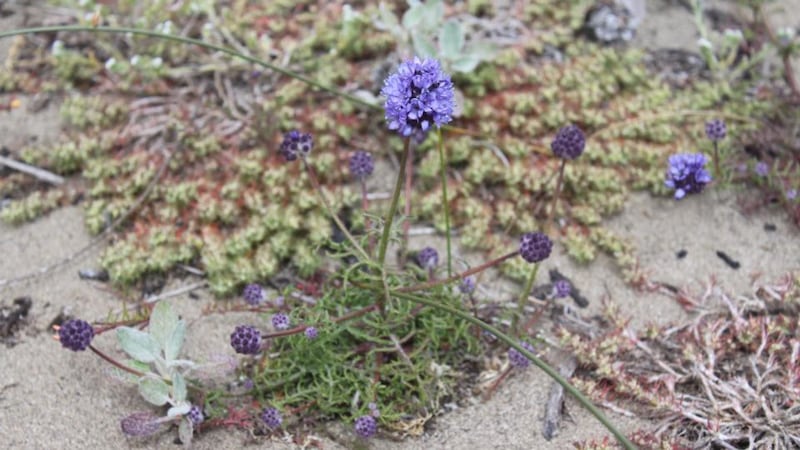Bodega Bay, north of San Francisco, has got pretty used to living with threats of one kind or another. Most obviously, this natural harbour sits on top of the San Andreas Fault, where the Pacific and North American tectonic plates rub up against each other.
The San Andreas line runs under the housing at the Bodega Marina Reserve of the University of California Davis, where I am a guest.
In the brilliant Californian sunlight Bodega Bay is a kind of paradise. But when dense fog rolls in, as it does very frequently, and amplifies the pounding surf on the northern beaches to a booming roar, it can seem a little sinister. Which is probably why Alfred Hitchcock chose to film The Birds here, and why John Carpenter used it as a location for The Fog.

In the real world, the abundant wildlife in Bodega is unthreatening, with the exceptions of poison ivy and, perhaps, the occasional mountain lion.
The bay is lined with migrating shorebirds and pelicans, the sea sometimes seems to heave with seals, sea lions and cetaceans, and the landscapes of the headland, part college experimental reserve and part state park, are still strewn with the last of the summer flowers.
But it is here, on the great dunes and extensive coastal prairies that make Bodega Bay so special, that serious threats to the future of these ecosystems are making frightening headway.
The odd thing about this is that some of the most threatening life forms here are very familiar, and very welcome, ecologically speaking, at home. Our cherished native plants, it turns out, can become most unwelcome alien invaders elsewhere.
I was taken aback when a Californian scientist, visiting Wicklow recently, expressed concern that the dunes of Buckroney Nature Reserve, just south of Brittas Bay, were so "infested" with marram grass (Ammophila arenaria). But this plant should be here, I reminded him, and he quickly conceded that his response was coloured by his experience of marram grass in his own native place. In California marram grass is invasive, spreading extensively because the ecological forces that control it in Ireland do not exist on the west coast of the United States. And so it displaces the native plants that once carpeted Bodega's dunes, such as sea lyme grass and sand verbena.
Indeed, more than a third of the plant biomass on Bodega Head is now made up of alien species. There is a danger of local extinctions of rare plants. There is also a danger that the whole system could tip over into a novel habitat that may become increasingly inhospitable to native animals as well.
The marram grass has not come to California by accident. It was systematically planted, in industrial rows, from the 1920s. It seems to have been introduced to stabilise the dunes,which were being trampled loose by cattle on the ranch that then occupied the headland.
The Gaffneys, the family that owned the ranch, didn’t want it blowing away, and local fishermen didn’t want the shallow harbour silted up with the Gaffneys’ sand.
But dunes are inherently mobile, and probably best left to their own dynamics. Ironically, the marram has now built up an enormous central ridge dune. Stabilised to rigidity, it is like the branch that will not bend but may collapse completely in a big storm, with potentially dire consequences.
Evicting the natives
Out on the coastal prairie, a particularly rich and rare ecosystem today, another familiar plant from this side of the Atlantic is busy evicting the natives. Yorkshire fog, or Holcus lanatus, our familiar velvety grass with feathery green or pink flower heads, has moved in relentlessly, probably introduced as grazing fodder.
Inspired by successes against marram grass in the dunes at nearby Point Reyes, the marine-reserve staff are considering radical options such as mechanical burial to eliminate the marram and carefully selected herbicide to deal with the Yorkshire fog.
Invasive traffic takes place on a two-way street, of course. American natives can often become nuisance plants for us. The cordgrass that now clogs up many Irish estuaries, Spartina anglica, and may be reducing our wading-bird populations, is the aggressively fertile hybrid of an American and a native Irish species.
And, sometimes, Irish and Californian ecosystems have common enemies, such as the South African Hottentot fig. The National Botanic Gardens is trying to eradicate this plant from Howth Head, on the northern edge of Dublin Bay, and the marine reserve is quite successfully removing it from parts of Bodega Head.
One has to pause, though, and wonder whether the use of this belligerent lexicon – “enemies”, “aggressive”, “invaders” – is helpful or accurate. It is not the plants that are to blame for their behaviour abroad but our carelessness, or wilfulness, in putting them in unsuitable environments.
In any case, the Bodega reserve’s director, Suzanne Olyarnik, takes a pragmatic approach. She is happy to leave stands of alien eucalyptus and cypress on the reserve, where they are not spreading. They have become, she recognises, cherished elements in the landscape.
She also recognises that there may be downsides to the treatments proposed for the plants that have become serious threats to this special place. But inaction, she believes, is no longer an option. “Restoration of native species here is now an imperative,” she says. “If we don’t restore them, we’ll lose the habitats we have.”
bml.ucdavis.edu/bmr







